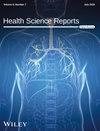Risk Factors for Kidney Stone Disease in Nimroz, Afghanistan: A Retrospective Case–Control Study, 2021
Abstract
Background
Kidney stone disease affects many people annually, impairing the quality of their life and health. Several risk factors such as family history, chronic diseases and diet have been reported to cause kidney stones. Reports and data show that there is an increasing pattern in the incidence of kidney stones.
Aims
This study aimed to determine the risk factors associated with kidney stone disease in Nimroz province of Afghanistan.
Methods and Materials
This hospital-based case-control study was conducted in Red Crescent Hospital (RCH) in Nimroz province during June–August 2021. Case was any patient with kidney stone diagnosed by ultrasonography and the control was a patient without kidney stone. Both were attending outpatient department of the target hospital at the time of data collection. The nonprobability purposive sampling technique was used. A face-to-face interview was carried out using a structured questionnaire. Bivariate and multi-variate analysis using Chi-square test, t-test, and multiple logistic regressions were performed to calculate p-values and odds ratio with 95% confidence interval.
Results
A total of 378 participants were interviewed (188 cases and 190 controls). The mean of age was 34.4 with 11.5 SD. The bivariate analysis in the study revealed a statistically significant association between kidney stones and occupation, BMI, family history, kidney disease, heart disease, blood pressure, and asthma. in addition, the multiple logistic regression results showed that daily use of salt and water, weekly use of eggs and diary, and age were also associated with kidney stones after adjustment of confounders.
Conclusion
The risk of kidney stones was found high among those with positive family history, > 30 BMI, and chronic ill patients. Cases who used more eggs and diary on a weekly base, and drunk less water and consumed excessive salt on a daily base were also more likely to have developed kidney stones. Families and the community should be educated about the modifiable risk factors of kidney stones.

 求助内容:
求助内容: 应助结果提醒方式:
应助结果提醒方式:


